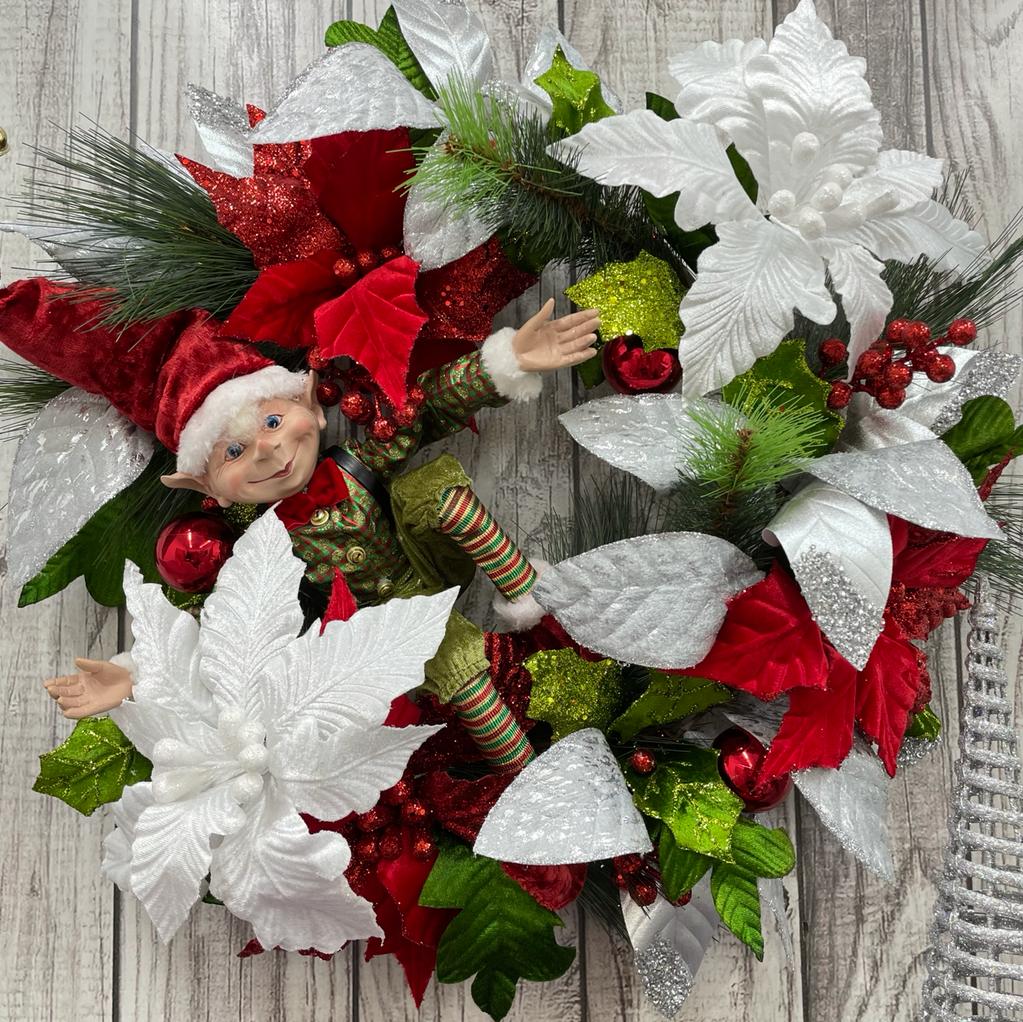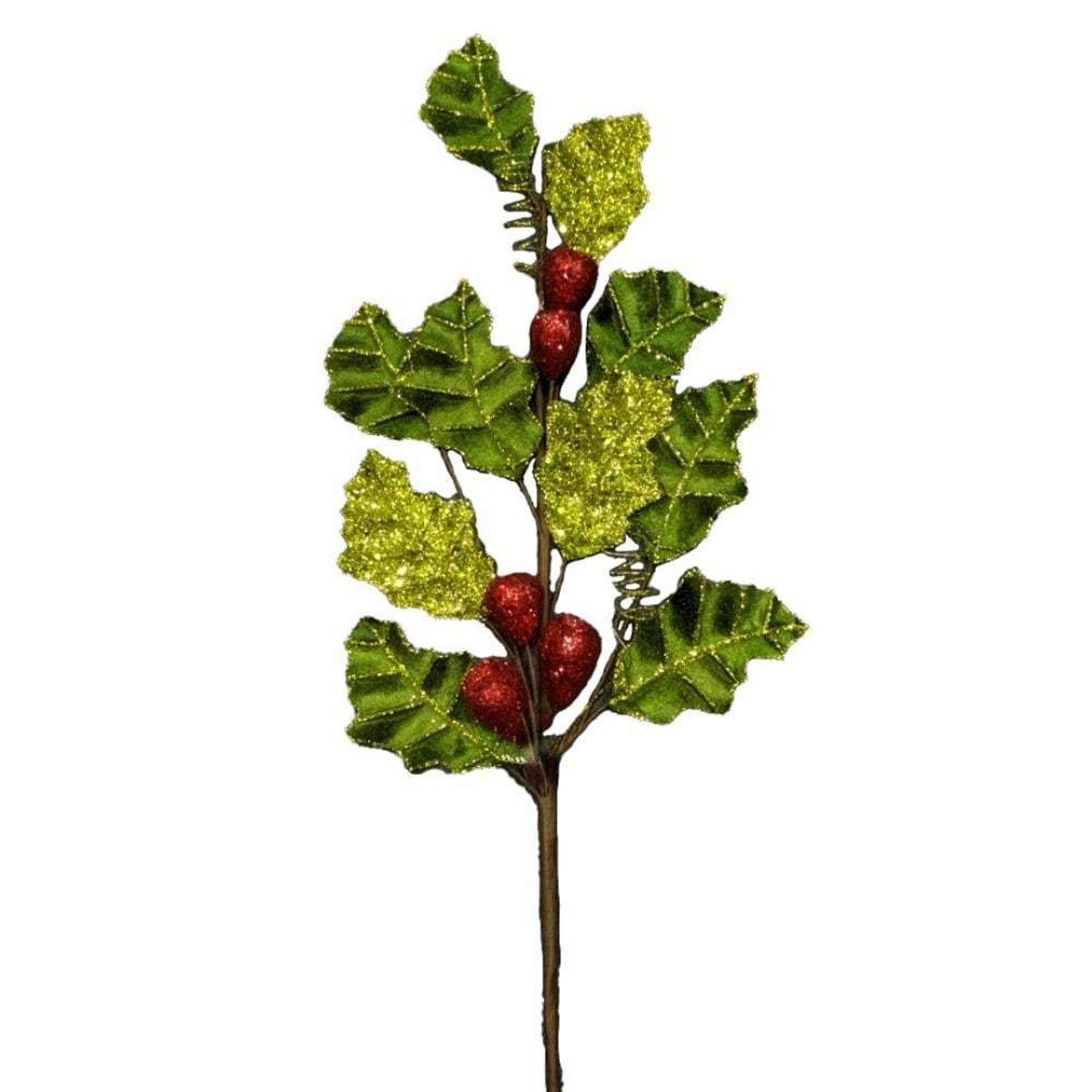Nothing evokes the feeling of Christmas quite like garlands of holly and ivy hung above the streets. Or poinsettias stacked in flaming red bunches next to a nativity scene.
These three red and green plants are all used as Christmas decorations, but have you ever wondered why? How did they come to be associated with the holiday and what is the history of their use?
In this guide, you'll learn the history of Christmas flowers. We'll cover everything from the ancient medical uses of poinsettias to the European traditions of using holly and ivy to ward off evil. We'll also tell you why so many decorators are turning to artificial floristry these days instead of using live samples.

The Poinsettia
The Poinsettia is a shrub or small tree from the spurge family of plants. They typically reach a height between two to thirteen feet when mature.
Poinsettias have dark green dentate leaves and coloured bracts which are typically bright red. These coloured bracts are often mistaken for flower petals because of their vibrant colours and grouping. But they are actually leaves.
The bracts change colour when exposed to fourteen hours of darkness for six to eight weeks. This is why they traditionally "bloom" in the winter.
But poinsettia owners can persuade their plants to change colour during other seasons. You can do this by keeping the plant in a dark closet for fourteen hours a day. The poinsettia should be in the sunlight for the other ten.
Cultivators breed poinsettias to have blooms in many different colours. They can be orange, pale green, cream, pink, white, or marbled. But red is the most popular colour for use as Christmas decor.
History of the Poinsettia
Poinsettias are native to Central America and grow in the wild from Mexico to southern Guatemala. Their range is about 1,931 kilometres long and is comprised mostly of mid-elevation tropical dry forests. Most wild populations grow on west-facing slopes in steep canyons.
Aztec and Mayan people were cultivating the flower long before the arrival of Europeans. These indigenous peoples had a variety of aesthetic, practical, and medicinal uses for the plant.
In the Aztec language of Nahuatl, the word for a Poinsettia is Cuetlaxochitl, and translates to "brilliant flower."
Aztec people used the plant to produce a red dye for clothes and cosmetics. They also used the milky white sap as a medicine to reduce fevers.
Over the centuries, Christianity grew rapidly in South and Central America. This was due to Spanish invaders and colonizers who forced Native people to convert to Christianity as a means to control them.
Poinsettias were first associated with Christian celebrations in the 17th century.
To further control populations of Native people, colonizers replaced traditional pagan festivals with Christian celebrations. Homes were customarily decorated with evergreen foliage during traditional festivals. Winter flowers and evergreens were symbols of undying life and fertility during hard winter months.
Franciscan priests in southern Mexico coopted these symbols. They used the red and green foliage of the flowering poinsettia to decorate elaborate nativity scenes.
Introduction to America
Poinsettias were introduced to the U.S. by Joel Roberts Poinsett. Poinsett became the first U.S. minister to Mexico in 1825. During his stay there, Poinsett sent specimens back to his plantation in Greenville, South Carolina.
Poinsettia was first propagated in the US by people at Poinsett's plantation. The ambassador sent samples of it to horticulturally minded friends. He also sent some to botanical gardens throughout the United States.
But this alone did not transform the poinsettia into one of the most popular Christmas flowers on the market today. Credit for that lies with the Ecke family.
The Rise of Christmas Flowers
Albert Ecke immigrated from Germany to Los Angeles in 1900 with his family. They opened a dairy and orchard in the Eagle Rock area.
His son, Paul Ecke Sr. became intrigued by poinsettias because of their unique and colourful appearance. Paul sold them in roadside stands with some success.
However, the poinsettias of 1900 were gangly, shrub-like, and very fragile. They had significantly fewer leaves than what we see on the modern poinsettia.
Over the years, Paul Ecke Sr. developed a poinsettia grafting technique. He combined the best pieces of different poinsettias to create a thicker and more marketable plant.
His son, Paul Ecke Jr. was the one responsible for advancing the association between poinsettias and Christmas. He sent free plants to television stations for them to display on air from Thanksgiving to Christmas. Paul Ecke Jr. also appeared on television programs like The Tonight Show and Bob Hope's Christmas specials to promote the plants.
The Ecke family moved their operation to Encinitas, CA in 1923 and maintained a monopoly on poinsettia sales until the 1990s. Their grafting technique that resulted in bushier and more attractive plants was a closely guarded secret.
In the late 1980s, a researcher by the name of John Dole discovered the poinsettia grafting method on his own and published it. This allowed competitors to flourish.
It also resulted in the outsourcing of poinsettia cultivation to Latin America. There, companies could take advantage of low-cost labour and exploit farmworkers.
Poinsettia Christmas Decorations Today
Poinsettias are the most popular potted plant in most western countries including Australia, US, New Zealand and Canada. Sales average over 65 million each year in just these four countries.
Recently, there has been a growing consciousness about the working conditions on poinsettia farms. This has lead many consumers to buy artificial floristry instead. Artificial poinsettias are used for decorations year after year and are more versatile than live plants.
Some people use artificial poinsettias in arrangements with other types of Christmas flowers. They are available in the traditional potted style, as well as in garlands, wreaths, and individual blooms.
Holly and Ivy
Holly and Ivy are two other festive plants that are widely used as Christmas decorations.
Holly is a genus of around 480 species of flowering evergreen plants that vary from trees to shrubs, to climbers. European holly is the type most commonly used for Christmas decorations.
Ivy is a genus of 12-15 species of evergreen climbing or ground-creeping plants. They have woody stems and large leaves.
The History of Holly and Ivy
Holly and Ivy have been used as winter decoration for thousands of years. Their rich greens and bright red berries were appealing colours in landscapes bleached white by winter. Adorning homes with these evergreen plants freshened the air and reminded people of the coming spring.
Because they are evergreen plants, many ancient spiritual traditions used holly and ivy as symbols of eternal life and rebirth. Holly trees and shrubs, as well as ornamental vine ivy, were thought to have magical properties. Decorating with them was a way to ward off evil spirits.
Holly has long been a part of European winter holidays. Early Europeans used holly for ornamentation during winter solstice celebrations. In Norse mythology, holly was associated with Thor and holly plants are grown by the home were thought to prevent lightning strikes.
Ancient Romans used holly as decoration during Saturnalia, a festival dedicated to Saturn, god of agriculture and animal raising. Because of these celebrations, holly became a symbol for the coming new season and was used as a colourful ornament for many winter festivals.
Ivy also came to symbolize eternal life, rebirth, and the coming spring season. In ancient Rome, ivy was associated with Bacchus, the god of wine and revelry.
Holly and ivy were used together as winter decorations across Europe. During Beltane, the Gaelic May Day festival, holly and ivy are burnt together to give thanks for the end of winter.
Holly and Ivy Christmas Décor
With the rise of Christianity in Europe, many pagan traditions found the way into the celebration of Christian holidays.
This is partly because as people were forcibly converted to Christianity by conquering empires, church leaders replaced pagan festivals with Christian ones. But people kept many of their previous decorating traditions, and so holly and ivy continued to be used during the winter Christian holiday that eventually became Christmas.
Christian meaning was also eventually attributed to the physical properties of holly and ivy. Holly's sharp leaves came to symbolize Jesus' crown of thorns and its red berries the blood he shed. Ivy became a symbol for eternal life in Christ.
Today, holly and ivy are still used in celebrations of both religious and secular Christmas. Like the poinsettia, they are incorporated into many different kinds of floristry such as wreaths, boughs, garnishes, and more.
Decorating with Artificial Floristry
As technology has advanced, holiday decoration enthusiasts have been able to purchase inorganic floristry to adorn their home. These options are inexpensive, reusable, and don't require the attention that live decorations do.
Cleaning up after decorating your staircase with live garlands can be an ordeal. Some people also have allergies to common decorations, such as poinsettias or pine.
Artificial floristry also comes in a stunning variety of colours. If you're the kind of person who wants to decorate with sparkling gold garlands of holly, this option is for you. It's also a more cost-effective way to decorate compared to buying new floristry every Christmas.
The History of Christmas Décor
The history of poinsettia, holly, and ivy's inclusion as Christmas decorations dates back thousands of years. In recent years, much of society has moved from decorating with live versions of these plants to using artificial floristry instead.
If there's one thing we know, it's that Christmas flowers and greenery has always been around. And it will likely stay around for the next thousand years. To browse our selection of long-lasting garlands, wreaths, and floristry, browse our website today.






